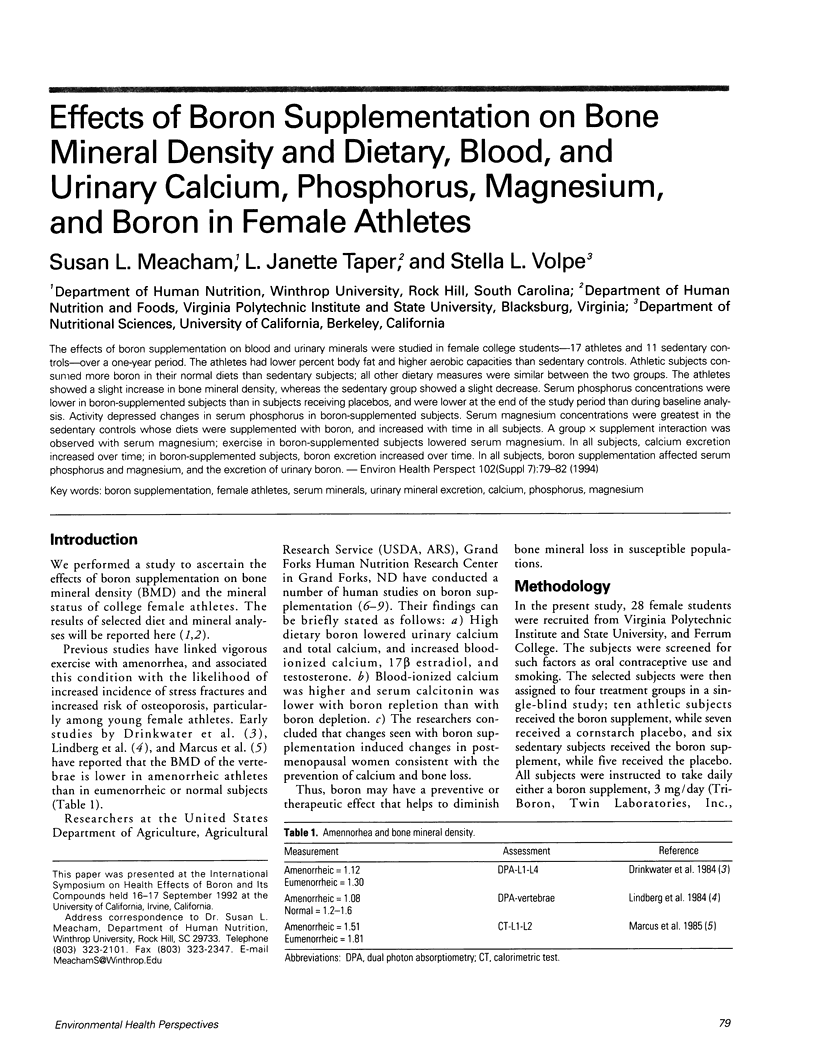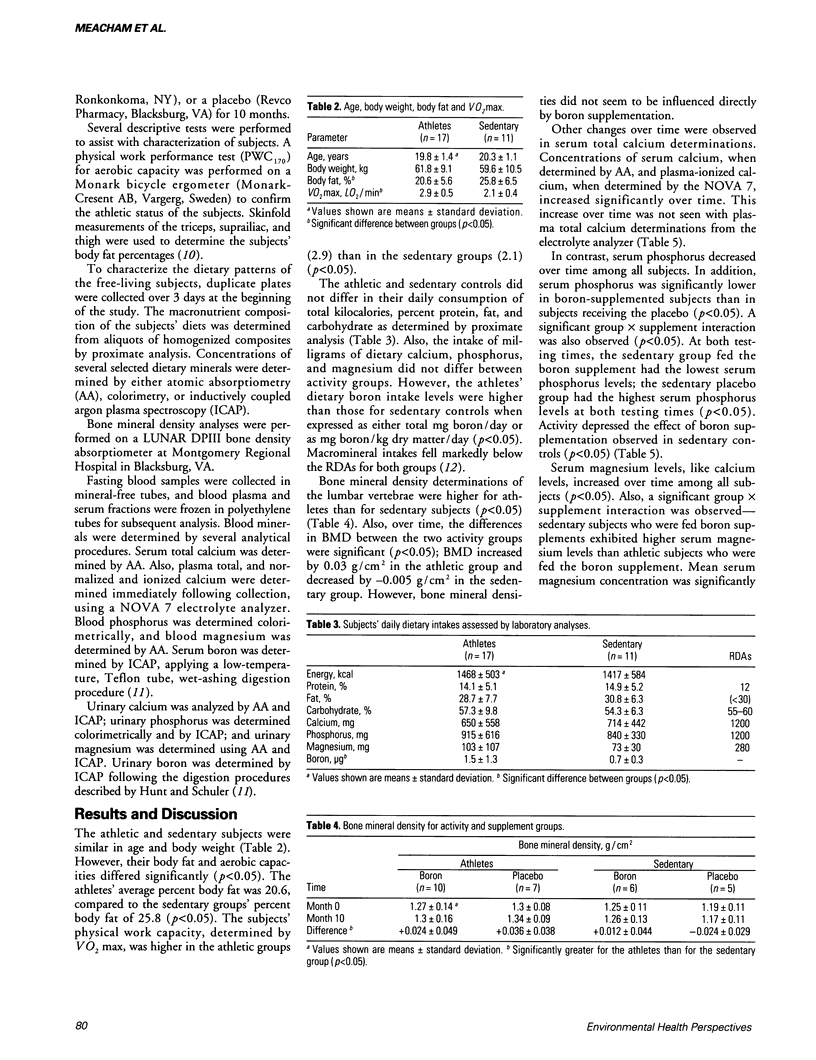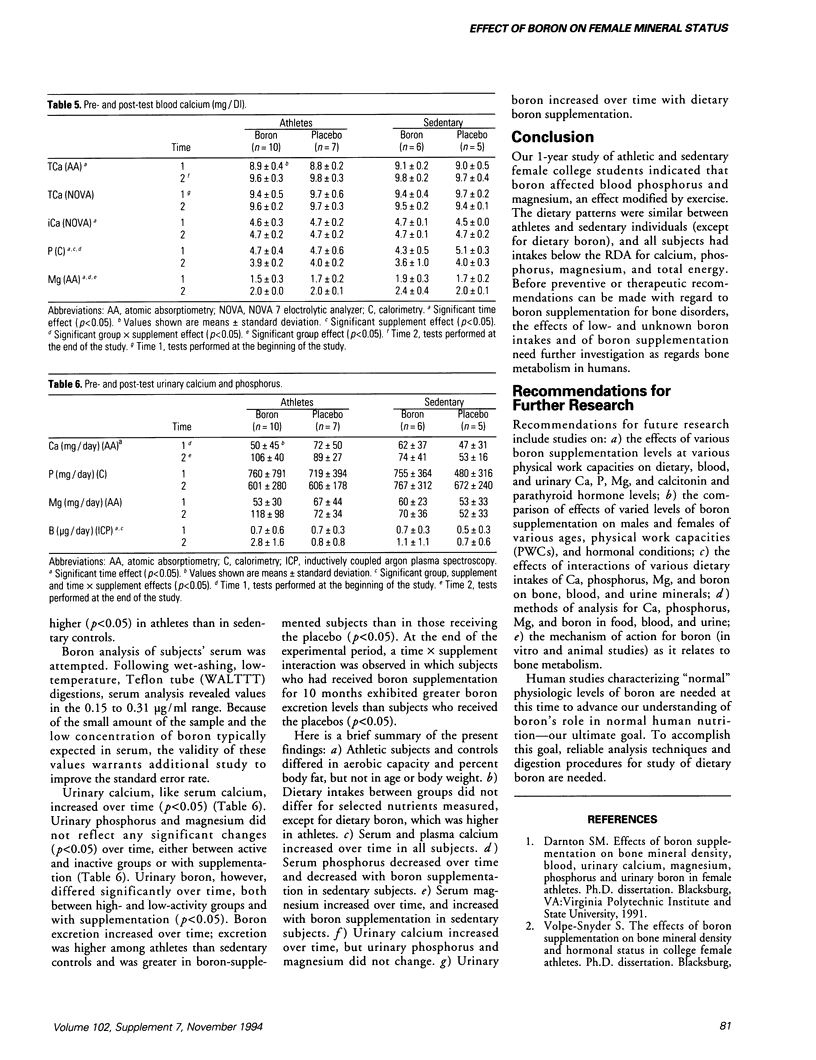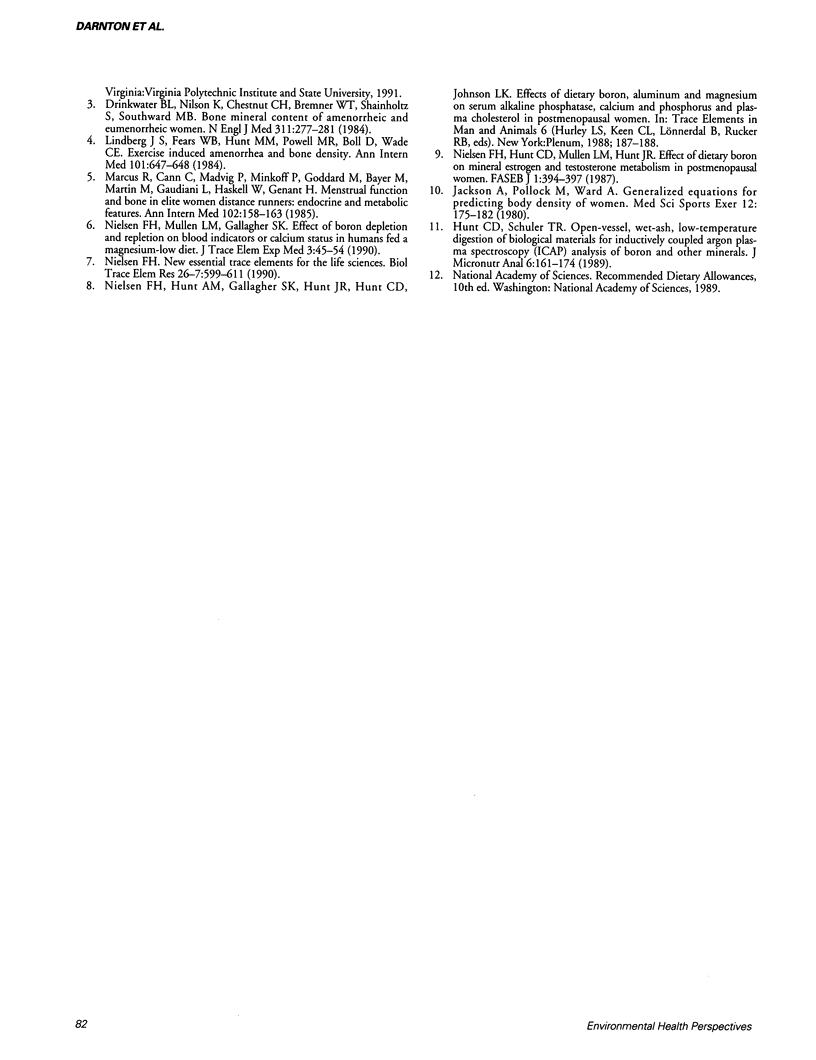Abstract
The effects of boron supplementation on blood and urinary minerals were studied in female college students--17 athletes and 11 sedentary controls--over a one-year period. The athletes had lower percent body fat and higher aerobic capacities than sedentary controls. Athletic subjects consumed more boron in their normal diets than sedentary subjects; all other dietary measures were similar between the two groups. The athletes showed a slight increase in bone mineral density, whereas the sedentary group showed a slight decrease. Serum phosphorus concentrations were lower in boron-supplemented subjects than in subjects receiving placebos, and were lower at the end of the study period than during baseline analysis. Activity depressed changes in serum phosphorus in boron-supplemented subjects. Serum magnesium concentrations were greatest in the sedentary controls whose diets were supplemented with boron, and increased with time in all subjects. A group x supplement interaction was observed with serum magnesium; exercise in boron-supplemented subjects lowered serum magnesium. In all subjects, calcium excretion increased over time; in boron-supplemented subjects, boron excretion increased over time. In all subjects, boron supplementation affected serum phosphorus and magnesium, and the excretion of urinary boron.
Full text
PDF



Selected References
These references are in PubMed. This may not be the complete list of references from this article.
- Drinkwater B. L., Nilson K., Chesnut C. H., 3rd, Bremner W. J., Shainholtz S., Southworth M. B. Bone mineral content of amenorrheic and eumenorrheic athletes. N Engl J Med. 1984 Aug 2;311(5):277–281. doi: 10.1056/NEJM198408023110501. [DOI] [PubMed] [Google Scholar]
- Jackson A. S., Pollock M. L., Ward A. Generalized equations for predicting body density of women. Med Sci Sports Exerc. 1980;12(3):175–181. [PubMed] [Google Scholar]
- Lindberg J. S., Fears W. B., Hunt M. M., Powell M. R., Boll D., Wade C. E. Exercise-induced amenorrhea and bone density. Ann Intern Med. 1984 Nov;101(5):647–648. doi: 10.7326/0003-4819-101-5-647. [DOI] [PubMed] [Google Scholar]
- Marcus R., Cann C., Madvig P., Minkoff J., Goddard M., Bayer M., Martin M., Gaudiani L., Haskell W., Genant H. Menstrual function and bone mass in elite women distance runners. Endocrine and metabolic features. Ann Intern Med. 1985 Feb;102(2):158–163. doi: 10.7326/0003-4819-102-2-158. [DOI] [PubMed] [Google Scholar]
- Nielsen F. H., Hunt C. D., Mullen L. M., Hunt J. R. Effect of dietary boron on mineral, estrogen, and testosterone metabolism in postmenopausal women. FASEB J. 1987 Nov;1(5):394–397. [PubMed] [Google Scholar]
- Nielsen F. H. New essential trace elements for the life sciences. Biol Trace Elem Res. 1990 Jul-Dec;26-27:599–611. [PubMed] [Google Scholar]


